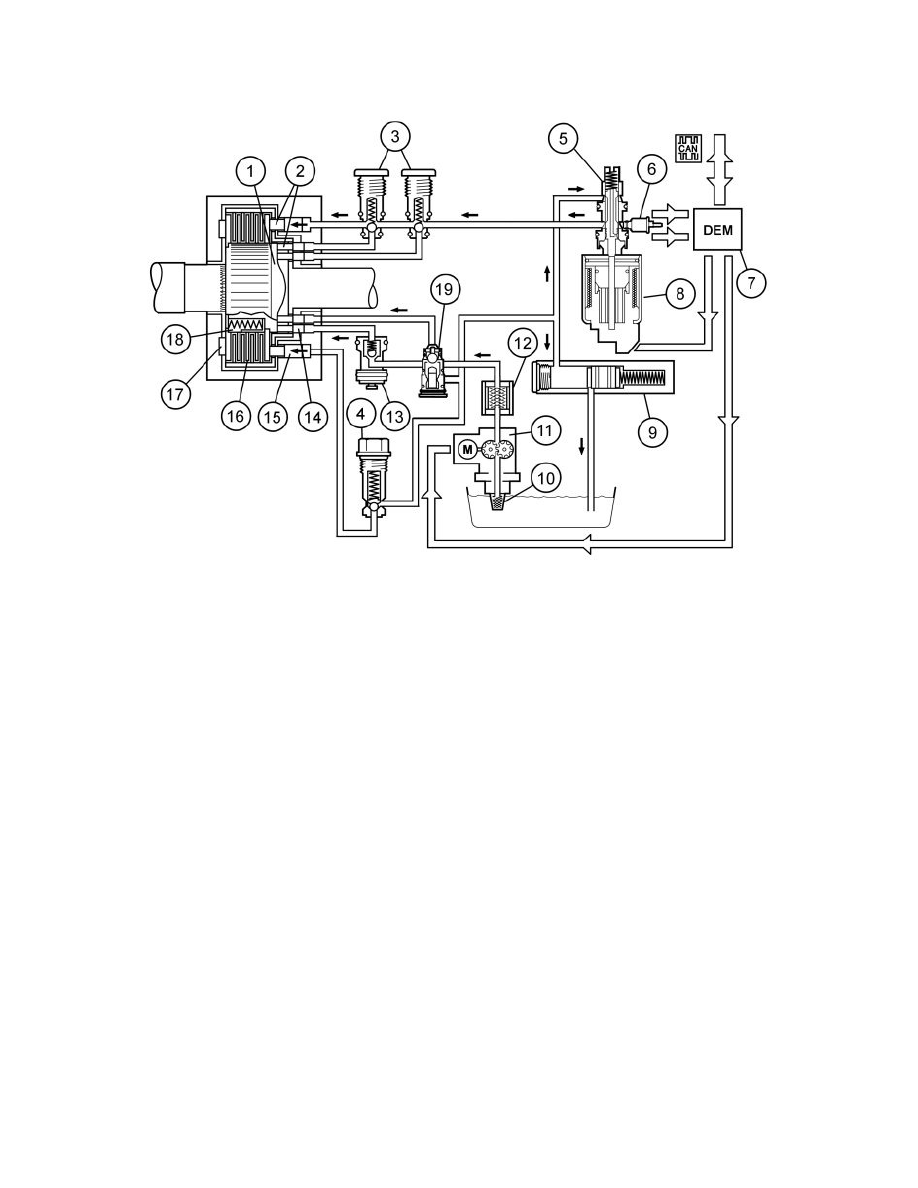XC90 AWD L6-2.9L Turbo VIN 91 B6294T (2004)

Hydraulic function, overview (2006-)
1. Cam disc
2. Rollers
3. Pressure valves
4. Pressure limiting valve
5. Control valve cover
6. Oil pressure and temperature sensor
7. Differential Electronic Module (DEM)
8. Control valve/axial solenoid
9. Accumulator
10. Oil screen
11. Electrical feed pump.
12. Oil filter
13. Suction valve
14. Piston pump
15. Operating piston
16. Wet plate unit
17. Bearing
18. Springs.
19. Relief and by-pass valve
The Active On demand Coupling (AOC) can be described as a hydraulic pump.
The basic pressure is generated by the electronic feed pump. This pressurizes the annular pistons with oil so that they are pressed against the cam disc via
rollers. The annular piston generates a working pressure which is led to the operating piston via the pressure valve. This pressure creates a fixed
connection between the input and output shafts. The maximum pressure is limited by the pressure limiting valve. The difference in speed between the
input and output shafts is in proportion to the oil pressure fed to the annular pistons. A large difference between the input and output shafts results in high
oil pressure to the annular pistons. If the input and output shafts are at the same speed, the oil pressure to the annular pistons is less. The oil pressure at
the multi-plate clutch is regulated by the control valve. The axial solenoid controls the control valve. A closed control valve gives maximum pressure to
the multi-plate clutch, resulting in maximum power gearbox. An open control valve gives minimum pressure to the multi-plate clutch, resulting in limited
power gearbox.
The accumulator maintains the basic pressure in the system. The oil filter keeps the fluid clean by filtering dirt and small particles which could damage
the system.
Pretensioning
